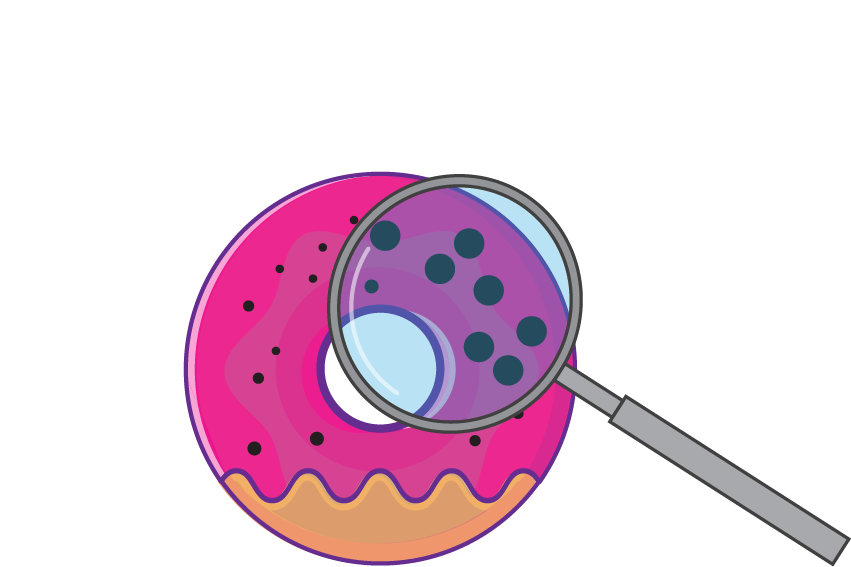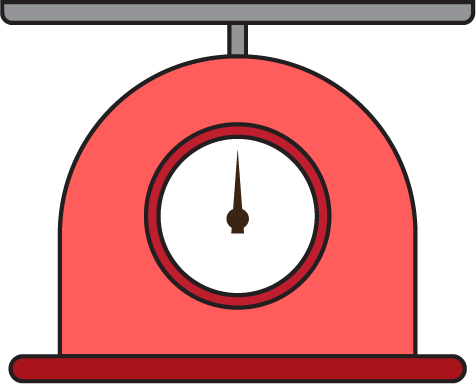Menu

Implantation continues in week 4, and this is the stage in which most organs are formed. The blastocyst implants within the uterus wall, its final destination for the next 36 weeks, where it grows and develops into the embryo and placenta. The blastocyst is called an embryo when the amniotic sac develops, usually at the beginning of week 5.
A yolk sac is developed before the formation of the placenta, and it can be seen by week 5. The sac provides the embryo with nutrients.
Generally, first ultrasounds do not occur until the 6th week, but you will be able to spot the gestational sac midway through the 4th week. There will likely be two sacs in case you are having twins.
The epiblast and hypoblast of the embryo will soon develop into your baby’s body parts and systems.
A yolk sac is developed before the formation of the placenta, and it can be seen by week 5. The sac provides the embryo with nutrients.
The epiblast and hypoblast of the embryo will soon develop into your baby’s body parts and systems.
During this early week of pregnancy, the blastocyst has fulfilled its journey from your fallopian tube to your uterus, after which it will be split into two groups, gradually forming the embryo and the placenta, respectively.
The embryo is secured to a tiny yolk sac, which helps to nourish and assist gas exchange between you and your developing embryo. After a few weeks, the placenta will be fully formed and attached to the wall of your uterus. It will take over the transfer of nutrients and oxygen to the embryo until you deliver your baby. The amniotic sac, containing fluid, begins forming around the developing embryo.
At this stage, the embryo has three layers of cells that will grow into distinctive parts of your baby’s body.






The fertilised egg journeys down the fallopian tube to the uterus and settles into the uterus lining, called the endometrium. This process, known as implantation, typically takes 3 to 10 days to complete.
During this time, you might experience what’s known as implantation bleeding. You may notice a small amount of bleeding or spotting, usually pinkish brown, which can come and go over a couple of days. It’s quite normal and usually doesn’t involve blood clots.
The HCG, human chorionic gonadotropin hormone, which has been in production since fertilisation, alerts the corpus luteum (hormone-secreting structure in the ovary) to stick around and produce progesterone and oestrogen to nourish the pregnancy until the complete formation of the placenta takes over, which is one of the roles of this progesterone and oestrogen during pregnancy.
It also signals the ovary to halt the release of an egg each month, thereby ceasing your monthly periods and triggering the onset of pregnancy symptoms, which may commence at this stage.
During these early stages, you might not observe significant changes in your body. Some women may remain unaware of their pregnancy for several weeks, especially if they are not closely monitoring their menstrual cycles or if their cycles are irregular.

Increased levels of oestrogen and progesterone can cause your breasts to feel tender, sore, or swollen. Your nipples may also become more sensitive. These changes are preparing your body for breastfeeding.

While commonly referred to as morning sickness, nausea and vomiting can occur anytime. According to research, Between 70% and 80% of women experience nausea and vomiting during pregnancy, making it unlikely that you will entirely avoid these symptoms.
It’s thought to be caused by the surge in pregnancy hormones, particularly hCG. Morning sickness usually begins around week six but can start as early as week 4 for some women.

Pregnancy hormones, particularly progesterone, can cause feelings of extreme tiredness, even in the early weeks of pregnancy. Your body is working hard to support the developing embryo, which can leave you feeling drained.

Hormonal changes, particularly increased blood flow to the kidneys, can lead to more frequent urination. Additionally, as the uterus grows, it puts pressure on the bladder, further increasing the need to urinate.

This is often the first sign that prompts you to suspect pregnancy. It occurs because the fertilised egg has implanted in the uterine lining, preventing the shedding of the lining that typically occurs during menstruation.

Cramps during pregnancy are typically not a cause for alarm. In the early stages of pregnancy, some women may experience implantation cramps, which occur when the fertilised egg attaches to the uterine lining. This may also be accompanied by slight spotting.
However, experiencing cramps during the first trimester, especially when accompanied by other symptoms like bleeding, could indicate a potential issue such as an ectopic pregnancy or miscarriage.

Increased levels of oestrogen and progesterone can cause your breasts to feel tender, sore, or swollen. Your nipples may also become more sensitive. These changes are preparing your body for breastfeeding.

While commonly referred to as morning sickness, nausea and vomiting can occur anytime. According to research, Between 70% and 80% of women experience nausea and vomiting during pregnancy, making it unlikely that you will entirely avoid these symptoms.
It’s thought to be caused by the surge in pregnancy hormones, particularly hCG. Morning sickness usually begins around week six but can start as early as week 4 for some women.

Pregnancy hormones, particularly progesterone, can cause feelings of extreme tiredness, even in the early weeks of pregnancy. Your body is working hard to support the developing embryo, which can leave you feeling drained.

Hormonal changes, particularly increased blood flow to the kidneys, can lead to more frequent urination. Additionally, as the uterus grows, it puts pressure on the bladder, further increasing the need to urinate.

This is often the first sign that prompts you to suspect pregnancy. It occurs because the fertilised egg has implanted in the uterine lining, preventing the shedding of the lining that typically occurs during menstruation.

Cramps during pregnancy are typically not a cause for alarm. In the early stages of pregnancy, some women may experience implantation cramps, which occur when the fertilised egg attaches to the uterine lining. This may also be accompanied by slight spotting.
However, experiencing cramps during the first trimester, especially when accompanied by other symptoms like bleeding, could indicate a potential issue such as an ectopic pregnancy or miscarriage.
Waiting for a pregnancy test result is not easy. However, engaging in fun activities for just the two of you can help distract you from the anxiety of waiting.
It’s important to maintain open communication with your partner about your feelings, whether they’re fears or excitement, regarding her pregnancy journey. Discuss together when you both feel ready to share the news with family and friends, and brainstorm creative ways to do so.
Remember, a happy mom contributes to a happy baby, so support and ensure your partner feels happy and stress-free throughout her pregnancy.
Your pregnancy at week 4 is approximately one month of your pregnancy, and you have eight more months to go.
At 4 weeks pregnant, you have 36 more weeks to complete your pregnancy journey.
You will likely not notice any symptoms at week 4 of your pregnancy. However, every pregnancy is different, and not everyone will experience all of the early signs of pregnancy. It is entirely normal if you do not notice any symptoms yet.
The heart’s development begins as early as the third week of gestation. At the end of the fourth week of gestation, the embryo’s heart begins to beat. This marks a significant milestone in the development of your baby.
At this stage, the heart undergoes rapid and irregular contractions, which are powerful enough to pump blood through the developing circulatory system. Despite being small and still, in the early stages of formation, the heart plays a vital role in supplying oxygen and nutrients to the growing embryo.
Every individual and pregnancy is different, but it’s generally unlikely that you’ll notice any significant change in the size of your belly at 4 weeks. At this early stage, your baby is only about the size of a poppy seed, so your belly won’t appear noticeably larger.
However, you may experience slight bloating around your abdomen due to hormonal changes associated with pregnancy, which could give the impression of a small belly. A visible baby bump typically doesn’t develop until around weeks 12 to 16, when the uterus expands beyond the pelvic area.
Certain home pregnancy tests are more sensitive than others and can detect pregnancy before your expected period. However, waiting until after the first day of your missed period may provide more accurate results.
The accuracy of the test improves with time because the level of the pregnancy hormone, human chorionic gonadotropin (hCG), in your urine increases as the pregnancy progresses. Taking the test earlier makes it more challenging for the test to detect the hCG hormone.
HCG is produced when a fertilised egg implants itself in the uterus, typically occurring around ten days after conception, which is when the man’s sperm fertilises the woman’s egg.
Your pregnancy at week 4 is approximately one month of your pregnancy, and you have eight more months to go.
At 4 weeks pregnant, you have 36 more weeks to complete your pregnancy journey.
You will likely not notice any symptoms at week 4 of your pregnancy. However, every pregnancy is different, and not everyone will experience all of the early signs of pregnancy. It is entirely normal if you do not notice any symptoms yet.
The heart’s development begins as early as the third week of gestation. At the end of the fourth week of gestation, the embryo’s heart begins to beat. This marks a significant milestone in the development of your baby.
At this stage, the heart undergoes rapid and irregular contractions, which are powerful enough to pump blood through the developing circulatory system. Despite being small and still, in the early stages of formation, the heart plays a vital role in supplying oxygen and nutrients to the growing embryo.
Every individual and pregnancy is different, but it’s generally unlikely that you’ll notice any significant change in the size of your belly at 4 weeks. At this early stage, your baby is only about the size of a poppy seed, so your belly won’t appear noticeably larger.
However, you may experience slight bloating around your abdomen due to hormonal changes associated with pregnancy, which could give the impression of a small belly. A visible baby bump typically doesn’t develop until around weeks 12 to 16, when the uterus expands beyond the pelvic area.
Certain home pregnancy tests are more sensitive than others and can detect pregnancy before your expected period. However, waiting until after the first day of your missed period may provide more accurate results.
The accuracy of the test improves with time because the level of the pregnancy hormone, human chorionic gonadotropin (hCG), in your urine increases as the pregnancy progresses. Taking the test earlier makes it more challenging for the test to detect the hCG hormone.
HCG is produced when a fertilised egg implants itself in the uterus, typically occurring around ten days after conception, which is when the man’s sperm fertilises the woman’s egg.
1. Arizona State University. Getting to Know the Germ Layers.
2. Healthline. When Does Your Baby Bump Start to Show?
3. Lee, N.M. and Saha, S., 2011. Nausea and vomiting of pregnancy. Gastroenterology Clinics, 40(2), pp.309-334.
4. Medlineplus. Foetal development.
5. National Library of Medicine. Human Chorionic Gonadotropin.
6. Nemours Kids Health. Week 4
7. Raising Children Network. 4 weeks pregnant.
8. Office on Women’s Health. Pregnancy tests.
9. Valenti, O., Di Prima, F.A., Renda, E., Faraci, M., Hyseni, E., De Domenico, R., Monte, S. and Giorgio, E., 2011. Fetal cardiac function during the 3.
2first trimester of pregnancy. Journal of prenatal medicine, 5(3), p.59.
© Mindsmaking 2024